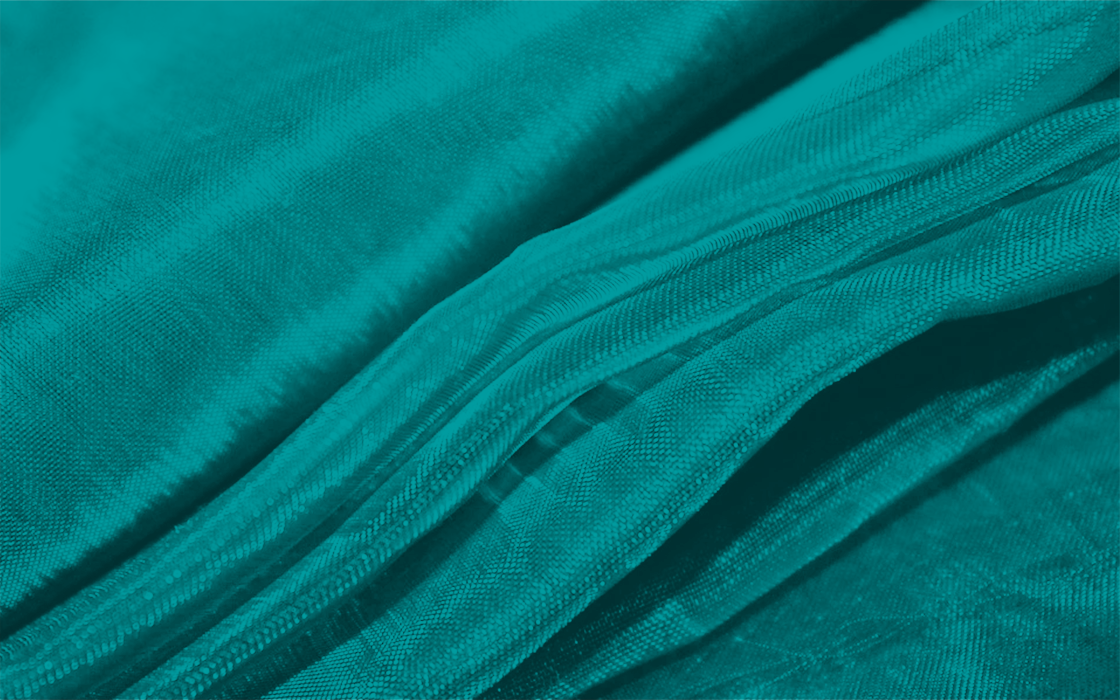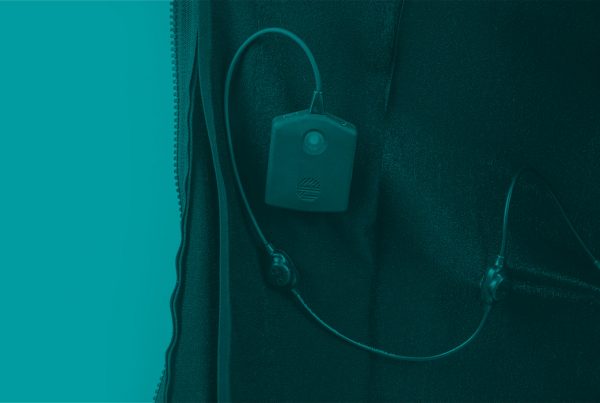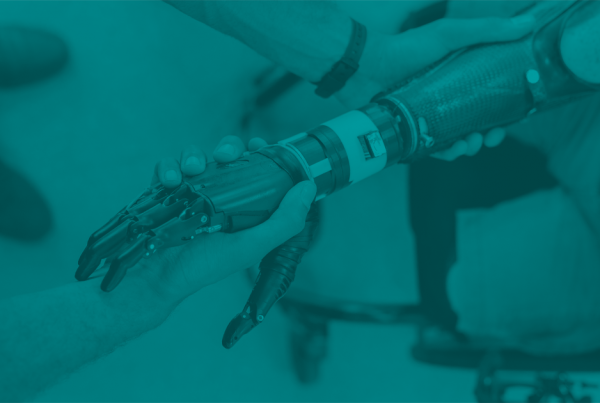Smart textiles are making the world an even more exciting place. They are already used for meaningful applications in the healthcare and sports industries, just to name a few. But this is only the beginning; the possibilities with smart textiles are endless and will keep on developing in the coming years.
Smart textiles are used to monitor and assist in revalidation, supporting independent living for the elderly. In the emerging field of VR and AR, they are used to track body position in a digital environment or to give feedback to the user.
Let’s explore some examples of smart textiles in action, along with predictions for their future.
What are Smart Textiles?
Smart textiles are fabrics with added electronic functionality. They are embedded with hardware and sensors such as motors, lights, accelerometers, temperature sensors and other electronics.
Now, these textiles are ready to provide the user with feedback. This makes other devices are unnecessary for user-machine interaction: it can all be integrated into your clothing.
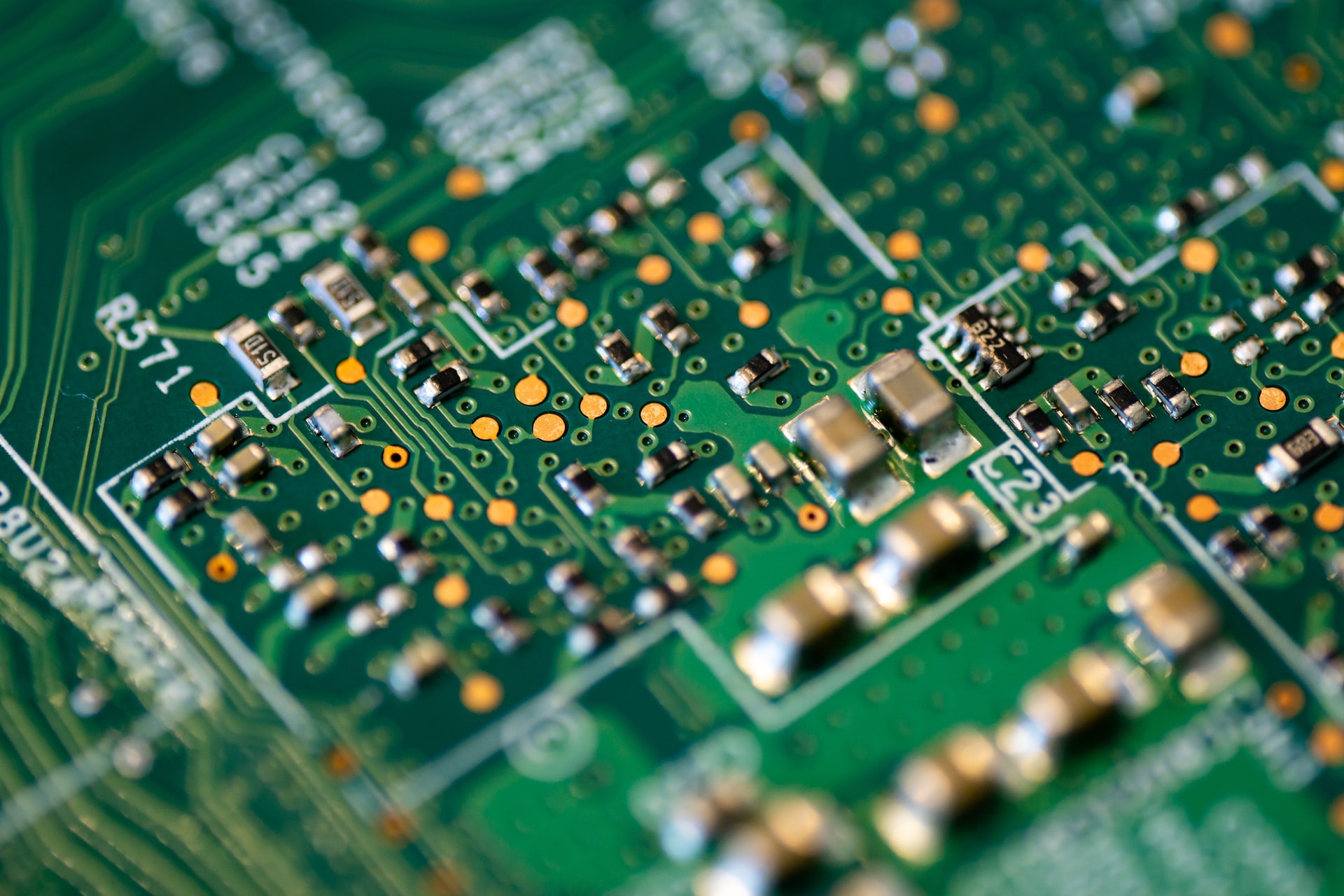
Take our SmartShoulder as an example. A wearable smart vest with integrated LED lights and a panic button to keep service engineers safe. Hands are kept free. No need for a flashlight and an extra walkie-talkie.
On the other hand, conductive materials such as silver conductive yarns and carbon nanotubes can also be woven, knitted, sewn, or printed onto different fabrics such as cotton or nylon to create both rigid and soft wearables.
The ability of fabrics to stretch, bend, and conform to the shape of our bodies means they can be used to monitor our health and well-being in ways that other ‘hard’ wearable technologies, like a smartwatch, cannot.
Moving beyond healthcare monitoring
Some smart garments can be used to monitor and track vital signs and send this data to computers or smartphones. For example, shirts and belts can monitor blood pressure and temperature during treatment and recovery.
But smart textiles can do much more than just measure vitals. They can also monitor the patient’s movements and posture. For instance, if you’d be slouching, or stretching incorrectly, posture sensors could alert you, or even your doctor, so you can re-train yourself correctly.
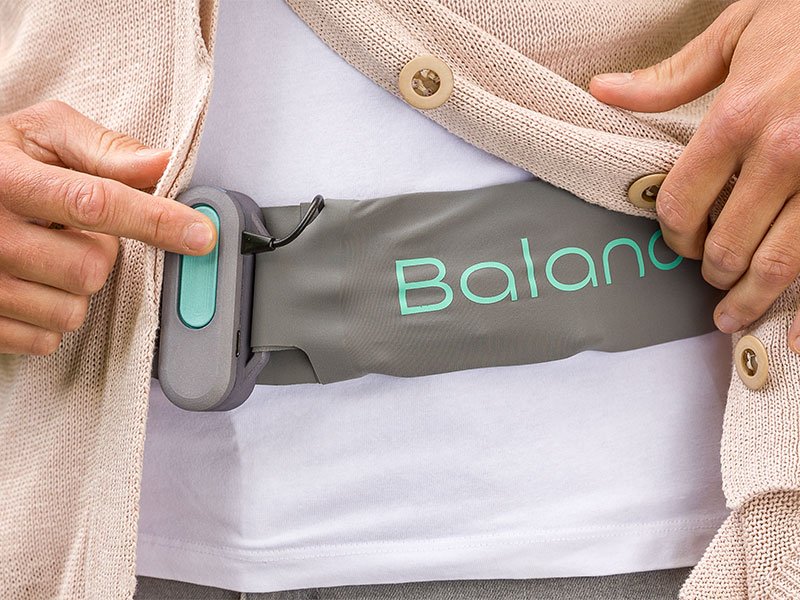
Some sensors can track a patient’s gait and motion, as well as their muscle activity. This helps patients with Parkinson’s disease, balance disorders, or with a leg prosthesis to move more confidently and independently, which can be a huge improvement in their quality of life.
Our wearables are already helping patients set steps towards easy mobility and freedom. The BalanceBelt, for example, supports patients with severe balance disorders by sensing the direction the wearer is leaning towards and alerting the wearer about their body position through vibrations.
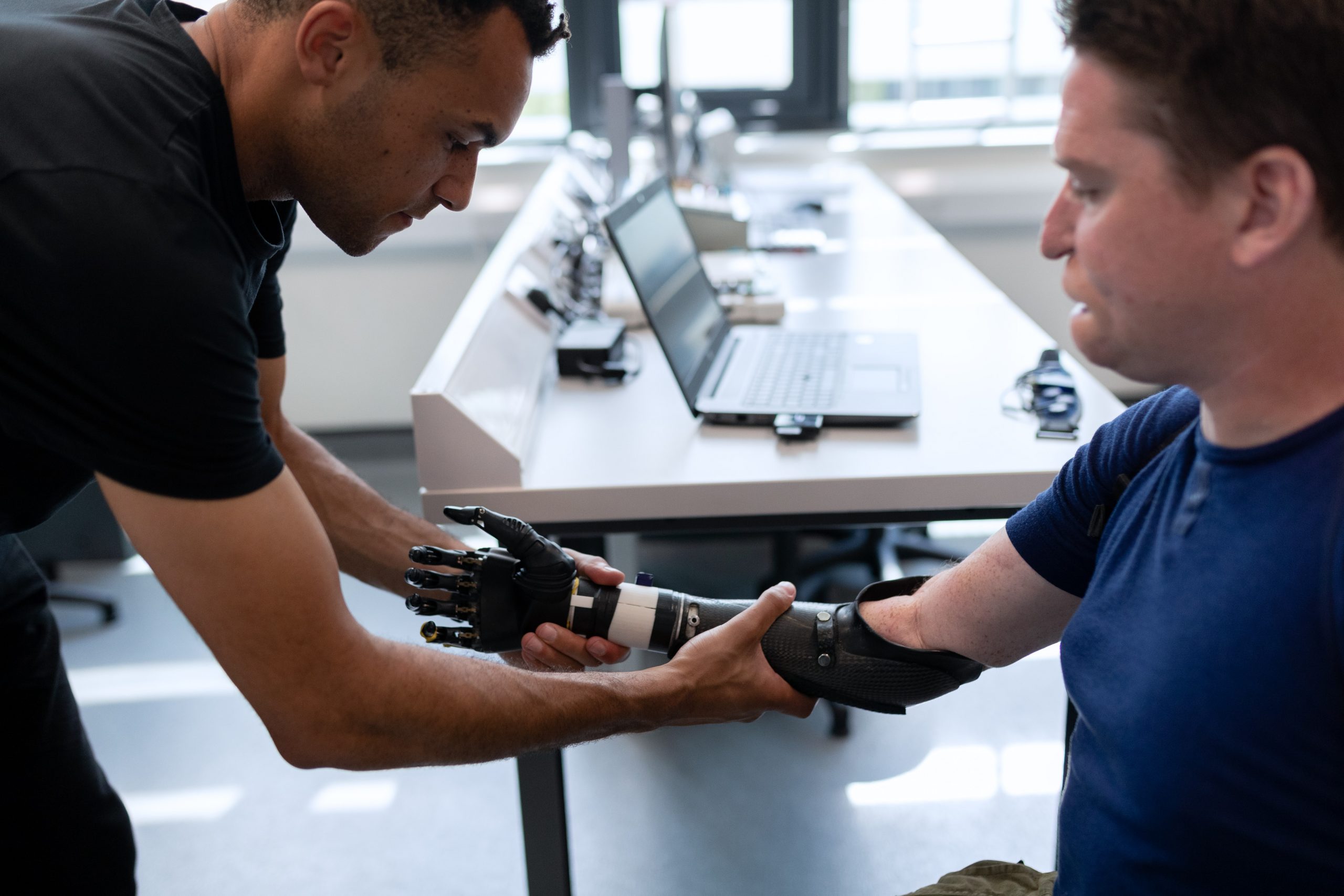
On the other hand, GaitKeeper, our ‘smart’ prosthesis makes it easier, faster, and safer for above-knee amputees to learn how to walk with a prosthesis.
Curious about how experts take prostheses and orthoses to the next level unlocking the power of active wearables? Join our free webinar Making Orthoses and Prostheses Smart.
From tracking to enhancing performance
There are plenty of garments that can be used to monitor athletic performance. New developments make it possible to measure performance and enhance it. This includes textiles with integrated heating and cooling systems and textiles that can change their physical characteristics to provide flexibility or support at different locations and moments to enhance the sporter’s movements and power.
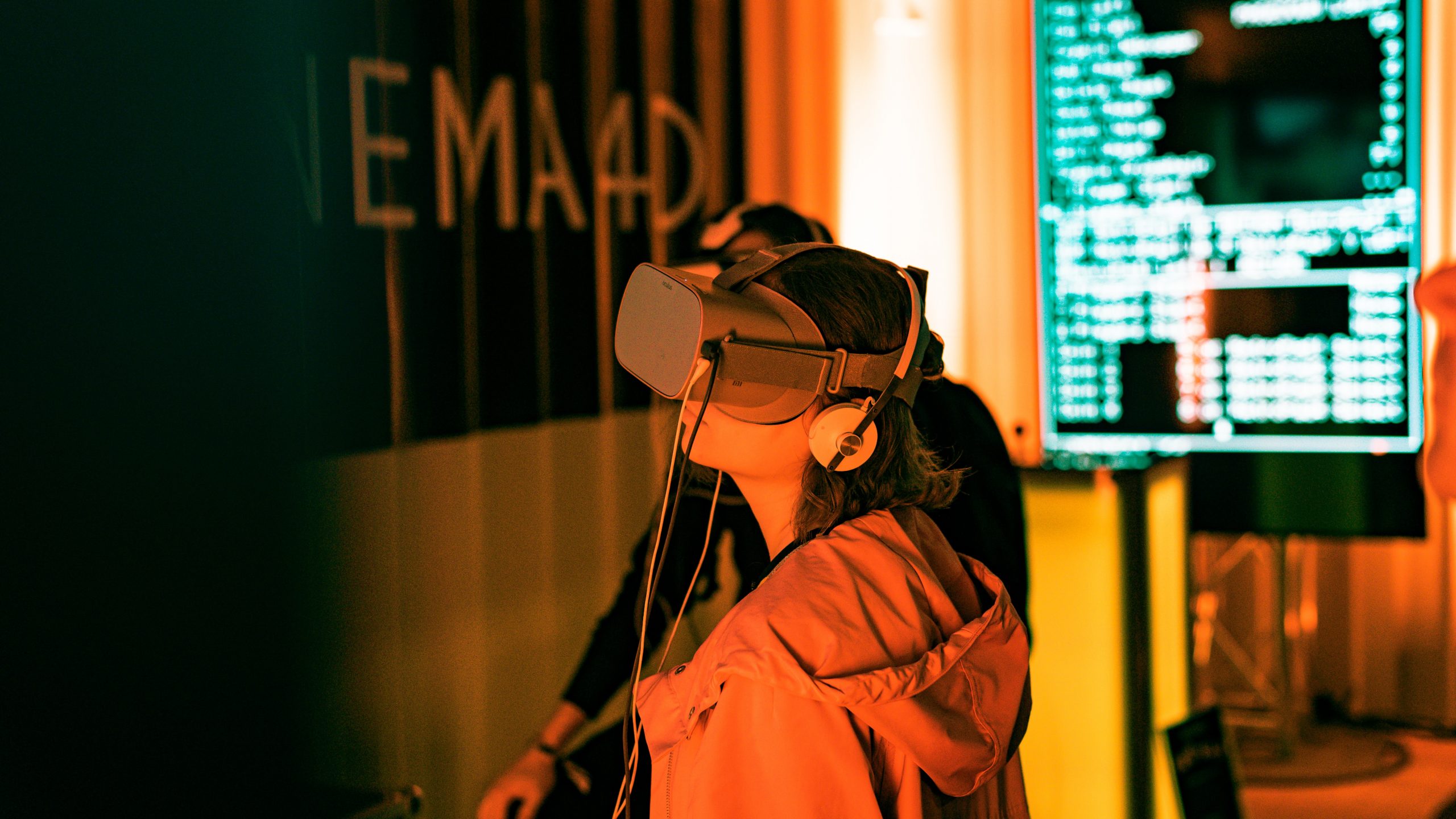
One of the exciting new possibilities in the Augmented Reality and Virtual Reality field is the integration of haptic feedback, using vibrations to create the sensation of touch; to feel virtual objects, for instance. Vibrations combined with the visual input from a virtual environment, it can create the sensation of touching any object.
In AR & VR, the potential of using Smart textiles with haptic feedback is immense. And we can expect to soon appear in gaming and healthcare, especially rehabilitation and education in the workplace.
The future of smart textiles
Smart textiles are an exciting new world full of incredible potential, predominantly for wearables. From monitoring our health to making VR experiences more interactive, smart textiles are already being used in meaningful ways, but there is so much more to come.
The ability of fabrics to stretch and bend means that electronics, sensors, and actuators can be integrated into garments in ways that were not possible with classic IoT devices, and this way place them close to the body, onto the skin. This creates many new ways in which smart textiles can improve our lives, and we’re just getting started.
Join many others that are already applying innovating technologies in wearables. Let’s develop the next big smart textile together. Are you ready?
By: Elitac Wearables
9 March 2023


